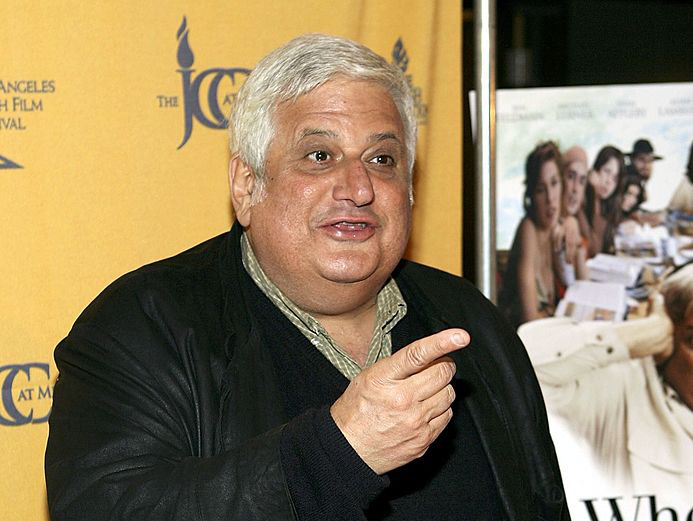Casting director Heidi Levitt had to fill more than 60 character roles for “The Artist,” the Oscar-nominated film about a 1920s silent movie star (Jean Dujardin) in Hollywood whose career spirals downward with the advent of sound, just as his protégée (Bérénice Bejo) reaches the height of stardom.
In casting this movie, which is itself silent and shot in black and white, Levitt said he had the opportunity to “give a break” to actors from New York and Los Angeles whom she has long known and admired, even though they may not be household names.
The two leads, French actors Dujardin and Bejo, came with the project. “It’s their movie; they’re the dynamic duo,” Levitt said. “But everything around them is what makes the picture complete, with the characters and the faces, from the extras on up. I mean, it was an awesome opportunity that I knew I wouldn’t often find.”
So she took the opportunity to bring in such actors as Penelope Ann Miller, who plays the fading star’s neglected wife.
“She was somebody whom I had known from years past in the theater,” Levitt said. “She did ‘Our Town’ on Broadway, and she always had this sweetness and grace, and the ability to win our hearts, and, at the same time, she has an edgy side. So I knew she could play this jilted ex-wife and maintain a certain dignity while projecting something else that would engage the audience and make people care for her.”
Some well-known character actors also appear in the film, including John Goodman, playing the studio head, and James Cromwell, as the silent star’s chauffeur. Their work was familiar to French director Michel Hazanavicius, and they were always at the top of the list. In addition, Malcolm McDowell makes a cameo appearance.
“It is the ‘actors’ actor’ movie,” Levitt said. “The film is not relying on special effects; it’s relying on the people to tell the story in a simple way, and [Hazanavicius] did an amazing job.
“I’ve worked with a lot of European directors, and I’ve worked on some really interesting projects. I’m very fortunate,” Levitt added.
Some of those projects include “Nixon” and “JFK” (for director Oliver Stone), “The Joy Luck Club” (directed by Wayne Wang), and “Nurse Betty” and “Lakeview Terrace” (both directed by Neil LaBute), among numerous others. She also has produced movies, under her Three Chapeau Productions banner, and runs Actor Genie, an iPhone app for actors, that is full of valuable industry information. Levitt began her career by being steeped in the New York theater scene, and she has also cast several stage productions.
While a student at Barnard College in the 1980s, she interned at the Circle Repertory Company, one of the foremost off-Broadway theater houses of the time, and landed in their casting department, where the seed for her future profession was planted.
The profession, Levitt explained, calls for her to present the best actors she can find for each role to the director, who makes the final decisions.
During the process of finding the best actors for “The Artist,” she created written audition material and also allowed the performers to improvise.
“We basically went through the scenes and would say that it was OK to talk, and that they should be natural. We shot it, and then we turned the sound off. We filmed them in black and white also. If you look at the auditions, they’re really interesting. ” The New York Times has made some of them available online.
“I was searching for people that could fit the period and the style of the movie, which was not about mugging,” Levitt said. We studied silent films and realized that the performers were simply acting. It wasn’t without words; they just didn’t have sound. One might communicate with a bit more gesturing than relying on the tone of voice, so the tone of the body language became more important. It’s subtle, but we were not looking for mimes; we were looking for actors.”
Although the movie doesn’t have an overtly Jewish context, Hazanavicius, who comes from a Lithuanian-Jewish background, told The Journal that he named the John Goodman character Zimmer to reference the early Jewish movie moguls. Levitt believes that fictional character could easily be compared to the film’s real-life distributor, Harvey Weinstein, also a visionary in the motion picture industry.
“There are very few strong independent distributors today who really take the care that the Weinstein Co. does to make sure that not only are these wonderful gems playing in a few art-house theaters, but that the public is getting to know something that they wouldn’t normally know.”
It’s not automatic: “In order for a movie to get out there, you need somebody, a kind of impresario who is able to combine, like the old-fashioned impresarios did, art and commerce.” Weinstein “is someone who appreciates the art,” Levitt said. “It is so clear from the movies that he chooses.”





















 More news and opinions than at a Shabbat dinner, right in your inbox.
More news and opinions than at a Shabbat dinner, right in your inbox.